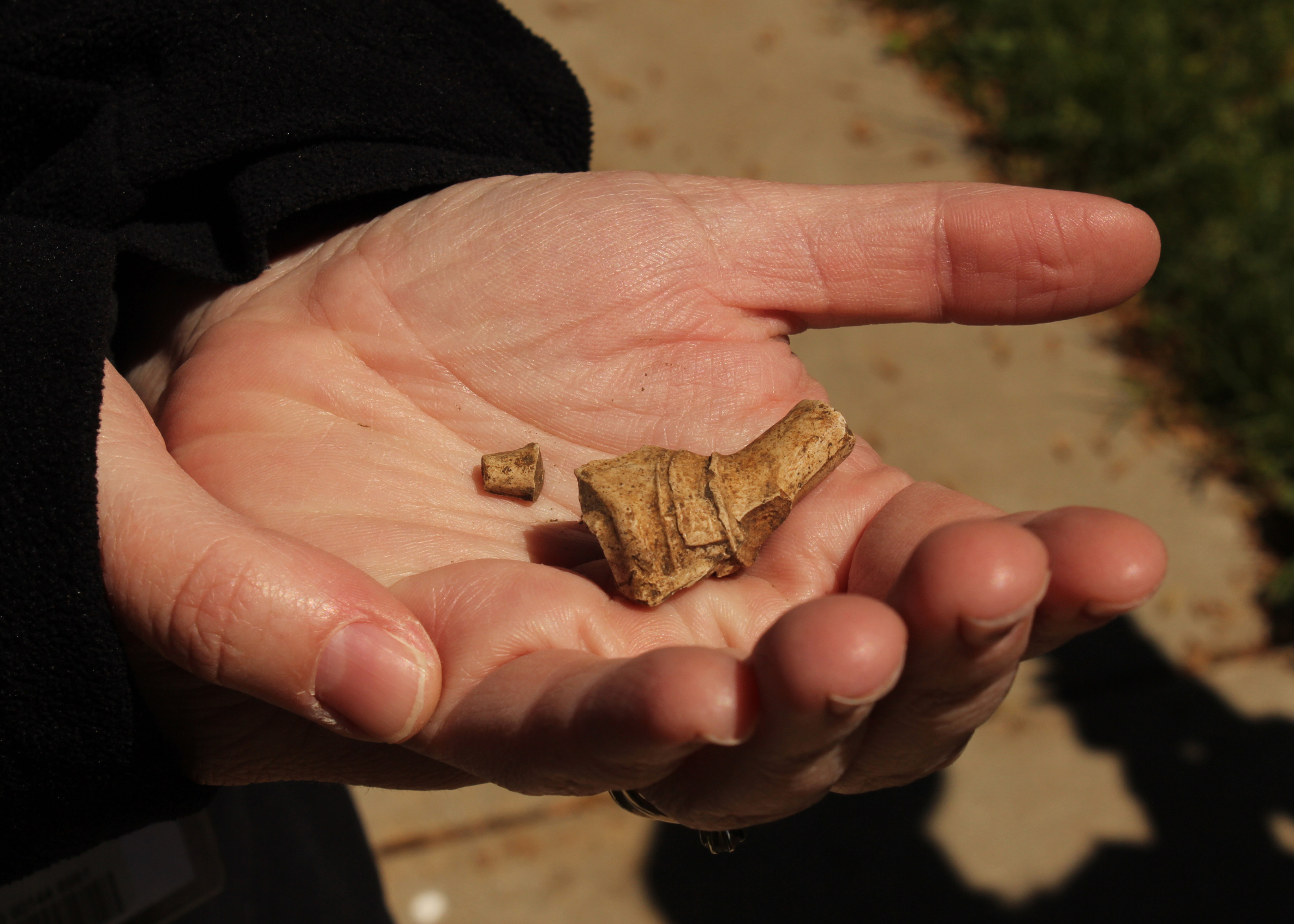Before Holmes Hall Stood at the Corner of Shaw and Hagadorn
May 22, 2019
Did you know that before 1953, when Michigan State College (MSU’s name at the time) broke ground to build new residences—Holmes Hall—that homesteads and farms dating back to the 1860’s stood at the corner of Shaw Lane and Hagadorn Road?This summer, the Campus Archaeology Program hosted its four-week Campus Archaeology Field School just east of Holmes Hall. The course is one of the only of its kind in the nation and offers undergraduate students hands-on field experience using GIS, surveys and maps, excavating, identifying and researching artifacts, heritage management and communicating with the public.
 The students shared that the soil included a lot of nails and construction debris from the 1950’s when Holmes was constructed. Farther down, they were finding evidence of animal bones, metal buckets, and large shards of medicine bottles dating from the 1890’s to 1930’s. Once an array of artifacts are cleaned, tested, researched, and catalogued, Lyman Briggs hopes to showcase them to help our students understand the deeper history of the area.
The students shared that the soil included a lot of nails and construction debris from the 1950’s when Holmes was constructed. Farther down, they were finding evidence of animal bones, metal buckets, and large shards of medicine bottles dating from the 1890’s to 1930’s. Once an array of artifacts are cleaned, tested, researched, and catalogued, Lyman Briggs hopes to showcase them to help our students understand the deeper history of the area.The Campus Archaeology Program reaches out to the public and offers opportunities for the community to learn about the historical roots of Michigan State University. In the 2017-18 academic year, LBC’s Science & Society at State interdisciplinary grant program funded an intensive two-day field school for STEM International Baccalaureate high school students.
We are grateful to be learning from colleagues in the Department of Anthropology about the historical heritage of the space our students call home.
For more, follow the Campus Archaeology Program on social media and visit their website.

